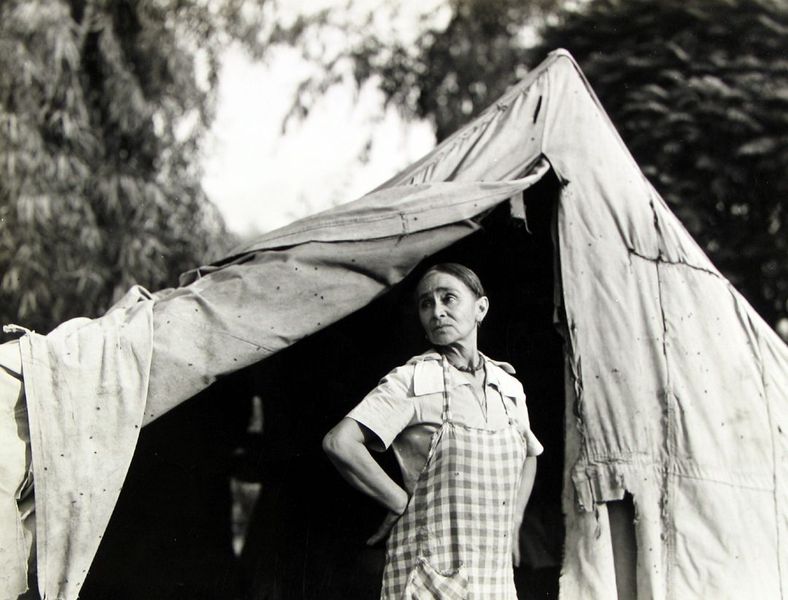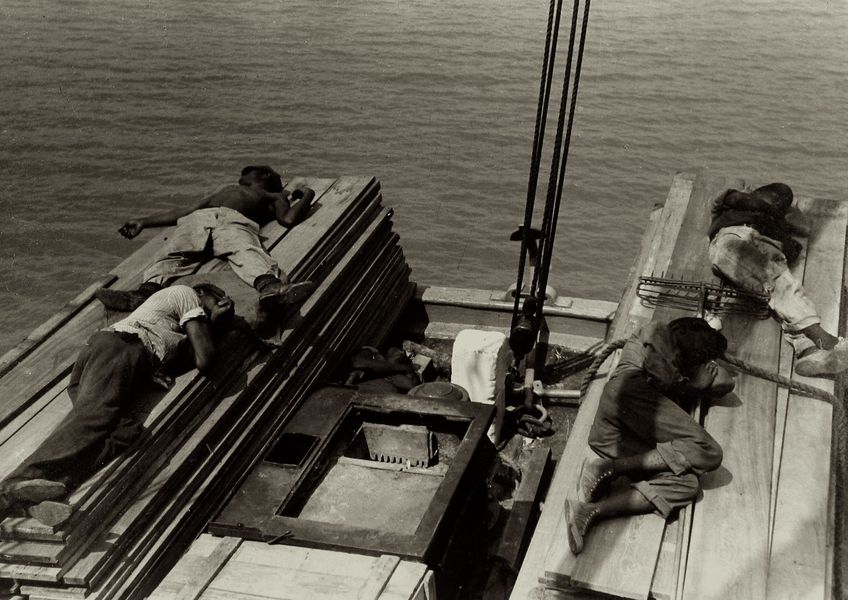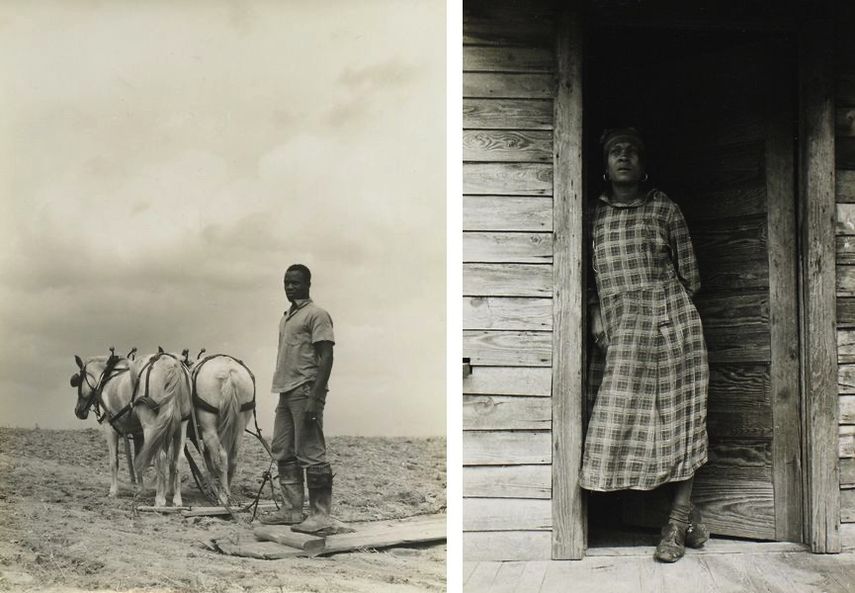Reexamining The Photographs of the Farm Security Administration
The worst economic downturn in the history of the industrialized world, the Great Depression challenged American families in major ways, placing great economic, social, and psychological strains and demands upon them. Affecting both working-class and middle-class families drastically, millions of people lost their jobs and many were deprived of their homes.
The current exhibition at the Howard Greenberg Gallery depicts the challenges impoverished families were enduring during these demanding times. Titled One Third of a Nation: The Photographs of the Farm Security Administration, the exhibition brings together more than 50 photographs by Walker Evans, Dorothea Lange, Russell Lee, Carl Mydans, Gordon Parks, David Robbins, Arthur Rothstein, Peter Sekaer, Ben Shahn, and Marion Post Wolcott.
Taking part in the government's Farm Security Administration program, these photographers captured the dire conditions around the country, communicating with photography what words could not.

The Farm Security Administration Program
In response to the Great Depression, during which unemployment, poverty and the effects of the Dust Bowl ravaged the States in the 1930s, the Farm Security Administration (FSA) was established by the government to provide loans to farmers, facilitate the removal of families from economically challenged cities for resettlement in rural communities, and formed camps for migrant workers.
Imbued in the nation’s social consciousness, the photographs that illustrate the history of the Great Depression originated in presidential action. In his second inaugural address, Roosevelt poignantly stated, “I see one-third of a nation ill-housed, ill-clad, ill-nourished. The test of our progress is not whether we add more to the abundance of those who have much; it is whether we provide enough for those who have too little.”
In 1935, Roy Stryker, an economist from Columbia University, was assigned to determine how to prepare pictorial documentation of rural areas and problems and present them to the American government and people. The project was particularly supposed to impress upon the American consciousness the desperate plight of rural workers and their families - sharecroppers, tenant farmers, struggling landowner farmers, and the new wave of migrants. In order to perform this difficult task, he brought together an extraordinary roster of young photographers.
The photographers were sent out on assignments throughout the United States and Puerto Rico, while the unit's main office in Washington, D.C distributed photographic equipment and film, drew up budgets, allocated travel funds, hired staff, developed, printed, and numbered most negatives, reviewed developed film, edited photographers' captions written in the field, and maintained files of negatives, prints, and captions. The main office also distributed images to newspapers, magazines, and book publishers and supplied photographs to exhibitions.

Capturing the Hardships of the Great Depression
Created by photographers such as Walker Evans, Dorothea Lange, Russell Lee, Arthur Rothstein, Ben Shahn, Jack Delano, Marion Post Wolcott, Gordon Parks, John Vachon, and Carl Mydans, the photographs of the FSA form an extensive pictorial record of American life between 1935 and 1944.
Staff photographers were given specific subjects and geographic areas to cover. Before beginning their assignments, which often lasted for several months, they would read relevant reports, local newspapers, and books in order to become familiar with their subject. Throughout the process, they were encouraged to record anything that might shed additional light on the topic that they were photographing.
Premier among the established photographers in the FSA project was Dorothea Lange, who worked with a burning desire to effect social change by informing the public of suffering far away. Beautiful, moving, and campaigning, her images capture the plight of sharecroppers, displaced farmers and migrant workers in the 1930s. One of the most celebrated images from this body of work is a depiction of a migrant family – a mother and her children in a camp. Migrant Mother was widely circulated in magazines and newspapers and became a symbol of the plight of migrant farm workers during the Great Depression.
The project generated a remarkable bank of over 200,000 first-hand photographs, generating a memorable record of rural life and displaced Americans coping with being caught in the throes of the natural and man-made disasters of the 1930s. Today regarded as some of the finest examples of modern documentary photography, these images include touching portraits of children, concerned parents, struggling workers, and difficult living situations. The images proved in no uncertain terms that the nation needed to act.
Capturing the plight of the poor and the successes of federal programs, these photographs represented an important watershed moment in the history of photography. Demonstrating that the government recognized the hardships of ordinary people and was working to relieve them, these photographs were meant to “show America to Americans.”

The Tale of Two Americas at Howard Greenberg Gallery
The exhibition One Third of a Nation: The Photographs of the Farm Security Administration will be on view online at Howard Greenberg Gallery's Viewing Room until May 9th, 2020.
Taking place simultaneously, the exhibition Lewis Hine: The WPA National Research Project Photographs, 1936-37 brings together more than 70 images portraying the workers and the innovations that spurred the nation’s economic growth, revealing a story of another America. Hired by the Works Progress Administration's National Research Project, Lewis Hine was capturing the modernizing accomplishments of the nation’s factories in the years prior to WWII. Together, these two exhibitions demonstrate the extraordinary power of photography to define an era and inspire social change.
Editor's Tip: The Likes of Us: Photography and the Farm Security Administration
Reproduced in duotone, the 175 photographs in The Likes of Us, all printed from the original negatives at the Library of Congress, offer a rare opportunity not only to see a choice selection of famous and little-known images from FSA project but also to understand the working of one of the government’s most original and creative pre-war initiatives.
Featured images: Russell Lee - Camp for Migrants, 1935-43. Gelatin silver print; printed early 1940s, 9 x 13 inches; Ben Shahn - Child of Fortuna Family, Hammond, Louisiana, October 1935. Gelatin silver print; printed c.1935, 7 5/8 x 9 1/2 inches; Carl Mydans - Untitled, c.1936. Gelatin silver print; printed later, 10 3/8 x 13 3/8 inches; Walker Evans - Construction worker, Louisiana, 1936. Gelatin silver print; printed c.1936, 9 1/2 x 7 1/2 inches. All images courtesy of Howard Greenberg Gallery.
Can We Help?
Have a question or a technical issue? Want to learn more about our services to art dealers? Let us know and you'll hear from us within the next 24 hours.

